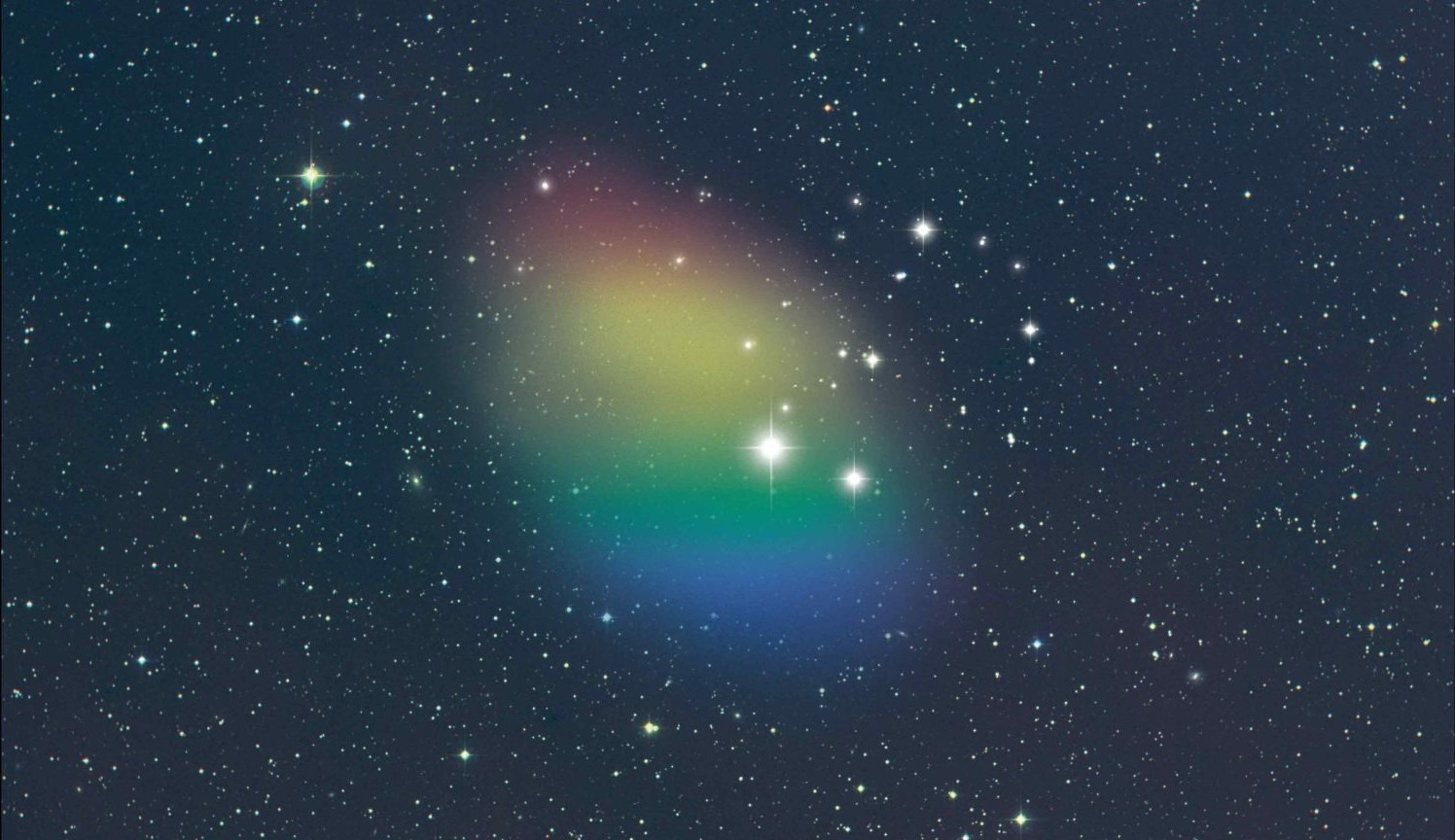Astronomers have accidentally discovered an entire galaxy in which there is a significant amount of gas, but no visible stars. The discovery was presented at the annual meeting of the American Astronomical Society. The discovery may seem paradoxical, but it can lead to rare and possibly unpredictable insights that call into question our understanding of how stars and galaxies form.

The object named J0613+52, located at a distance of 270 million light-years from us, is a galaxy with low surface brightness (LSB). The term LSB means that when observed from Earth, the galaxy is at least one magnitude lower than the brightness of the ordinary night sky, due to scattered gas and has few stars. Although the classification of the discovered galaxy should also have at least a few stars, J0613+52, which does not seem to have any, may be even more rare and incomprehensible: a dark, primordial galaxy.
“This could be our first discovery of a nearby galaxy made up of primordial gas.,” said Karen O’Neill, senior researcher at the Green Bank Observatory.
O’Neill and her team stumbled upon the object thanks to a random mistake made while studying LSB. In fact, they realized that there was a discrepancy in the data between the two telescopes they were using, which led them to double-check where they were looking.
Having discovered the absence of stars in the galaxy, despite the presence of a significant amount of gas, which has a mass of 1-2 billion solar masses, scientists have also determined that J0613+52 is extremely isolated. The galaxy is too far away from others for their gravity to contribute to the star formation process.
“J0613+52 appears to be both undisturbed and underdeveloped,” O’Neill added. This characteristic – “undisturbed and underdeveloped” – is the key one. This indicates that this “dark” galaxy remained stable for billions of years of its existence, without significant gravitational influences that would cause gas to condense into star formation.
It remains to make further observations to confirm these findings. Astronomers will probably be looking for heavy metals that indicate the presence of stars. If none are found, it will be an important proof that J0613+52 is indeed a mysterious dark galaxy that has been undetected for so long.
Earlier, we reported on how a giant ring of galaxies was found in space.
According to bigthink.com
Follow us on Twitter to get the most interesting space news in time
https://twitter.com/ust_magazine


